The AMD Threadripper 2 Teaser: Pre-Orders Start Today, Up to 32 Cores
by Ian Cutress on August 6, 2018 9:00 AM ESTX399 Motherboards: The MSI X399 Creation
For the motherboard situation, AMD clarified that all motherboards on the market today will be able to run the new 250W processors. The differences will be in how well each motherboard will be able to overclock, with AMD citing that the newer models and revisions should perform better, given that they were built with a higher power rating already in mind. Boards like the X399 Creation should also help in pushing the first generation Ryzen Threadripper.
Box. Has board inside.
As noted back at Computex, the MSI X399 Creation is a very visually busy motherboard. Lots of angles, and lots of shades of grey. I know it is customary in some Asian languages and magazines to be very dense, and this is kind of what that looks like. Most of the time I prefer a simpler, elegant design. This design does not scream elegance.
The key headline for this motherboard is the power delivery. MSI has put 16 phases on the processor, and another three for "uncore" portion of the chip, or as AMD calls it, the SoC. In order to fit them in, the DRAM slots are slightly further down than average, but it also allows MSI to put in a larger heatsink, which also connects to the heatsink near the rear panel of the board.
In case you forget the name: Creation.
Storage on the motherboard comes in two forms: eight SATA ports, and seven M.2 drives. That is not a typo: MSI has enabled this motherboard with seven M.2 slots. Three come from on the board, and are found under the chipset heatsink. Here are two of them:
The other four comes from an add-in PCIe card. We also saw this at Computex, and it uses a dual-slot design. It looks like a GPU:
But inside are four M.2 slots, with thermal pad on the heatsink to assist with cooling.
MSI states that this was built specifically with Threadripper in mind, so I’m going to annoy our SSD reviewer, Billy Tallis, to hand over a few more drives.
Also on the board is an extensive rear panel, with USB 3.1 ports, USB 3.0 ports, Ethernet, and Wi-Fi:


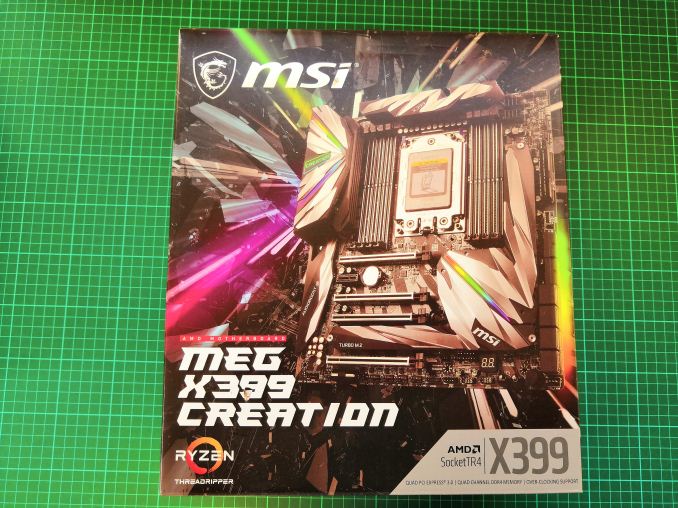
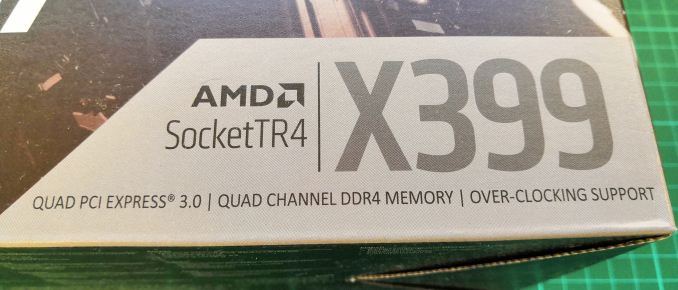
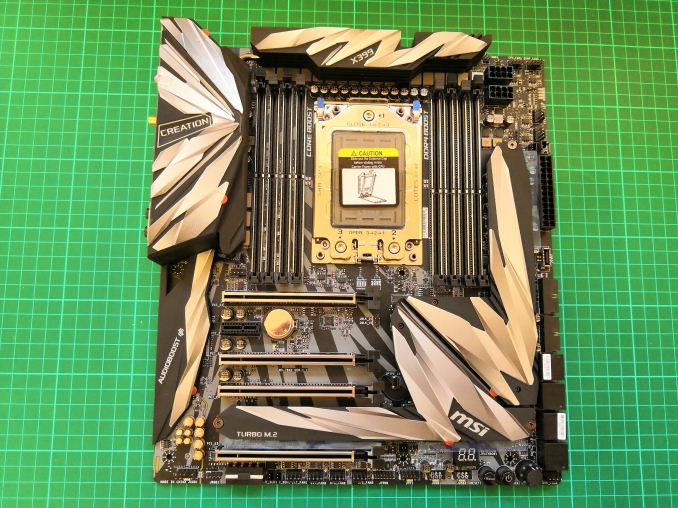
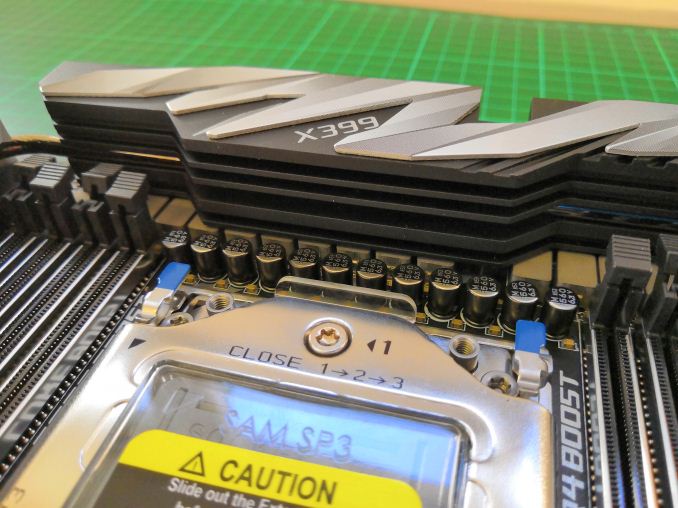


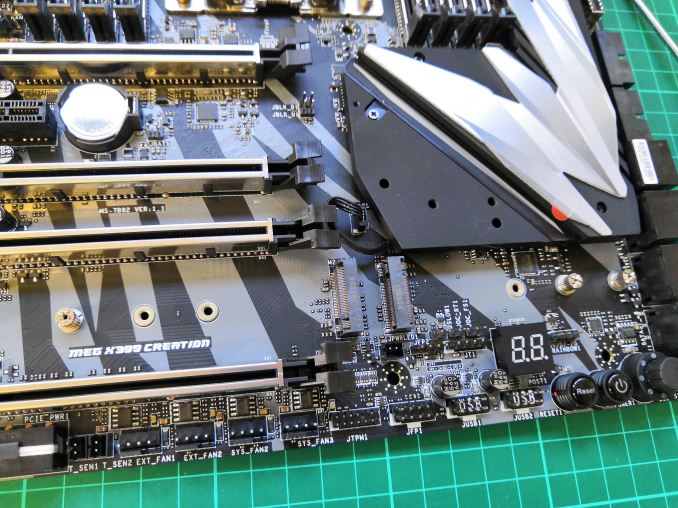
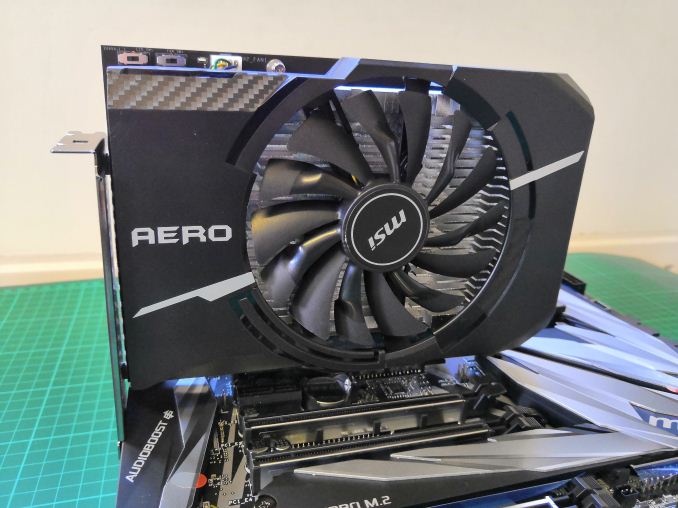
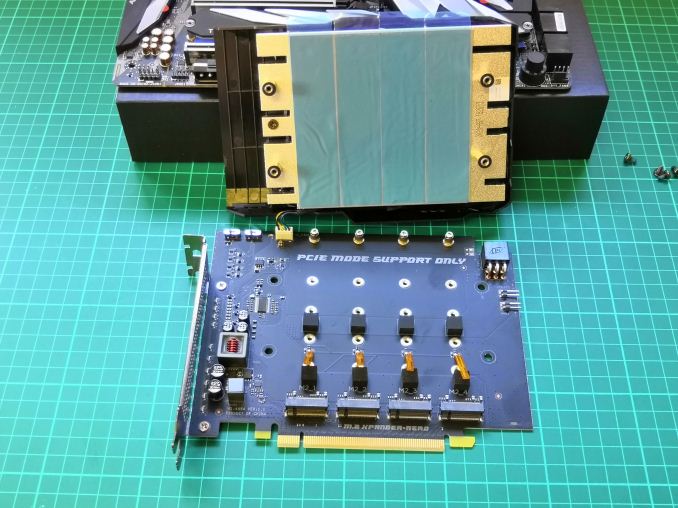
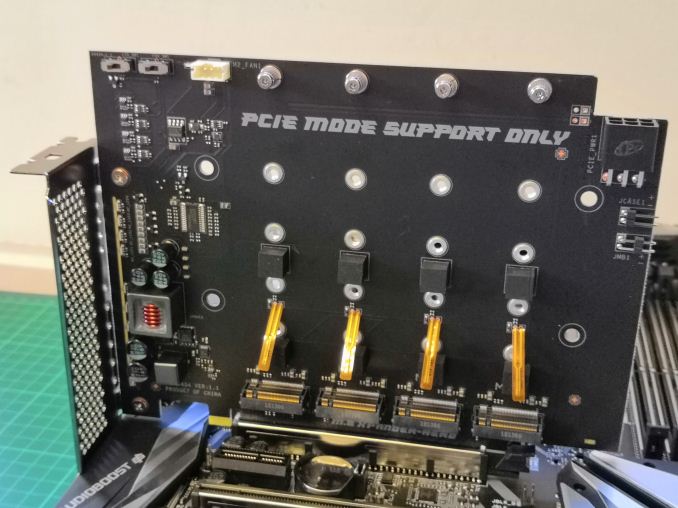

_thumb.jpg)
_thumb.jpg)
_thumb.jpg)
_thumb.jpg)
_thumb.jpg)
_thumb.jpg)








101 Comments
View All Comments
gipper51 - Monday, August 6, 2018 - link
It is comical the number of folks who think the only purpose for a high end PC is to play games.rocky12345 - Tuesday, August 7, 2018 - link
This is true 100% I blame a lot of it on the tech sites (not Anandtech of coarse) that try to focus on gaming with CPU's that clearly are made for more than just gaming yes they can game but CPU's like this are designed for so much more. When Anandtech's review comes out I am sure they will have the proper tests done for CPU's like this and yes they may also through in a few games just to show that these CPU's can also do a bit of gaming which is fine.edzieba - Monday, August 6, 2018 - link
"Make a list of the top 15 reasons people who actually do work and could use a high-end workstation to take care of business. Now question: will the Core i9-7980XE be faster atany single one?"I'm in the middle of a rush rollout of quad-core machines to replace several tens of thousands (workdwide, only a 'few' thousand in this building) of dual-octacore-CPU workstations because before purchase and rollout, nobody bothered to look at users' actual workloads. Turns out threaded workloads were exceptionally rare, so all the monster workstations were utterly worthless in real world performance compared to the 'low spec' machines the back office staff were using.
Pretty much any highly threaded workload has already been offloaded to a GPU (or Phi) coprocessor, or moved entirely to a remote HPC cluster. For desktop workstations, threaded workloads are the exception rather than the rule.
edzieba - Monday, August 6, 2018 - link
And this is at a Fortune 5 company, who not only should know better but were repeatedly told their purchasing decision was a terrible mistake. But it's hard to fight simple "more cores is more better!" marketing with specific-use-case benchmarking numbers, eyes start to glaze over.mapesdhs - Monday, August 6, 2018 - link
Also shows that the very people employed to provide proper advice on such things are often the first to be ignored. Been through that lunacy several times when I was a sysadmin.johnnycanadian - Monday, August 6, 2018 - link
Oh man -- I know this may sound quite unethical and downright sketch, but hopefully you, as an enthusiast, can get a few of the older machines sent your way to noodle around with ... or build your own (somewhat TDP/performance obsolete) data centre! :-)edzieba - Monday, August 6, 2018 - link
Nope, they take Data Remanence very seriously (and a good chunk of the drives pass through my hands anyway). A machine that went walking out the building without being processed through bag & tag and scanned by the disposal service would make a lot of people very upset and generally be considered a bad move.rocky12345 - Tuesday, August 7, 2018 - link
Yea they would rather have them sent to the recycle plant and destroyed most likely once the hard drives are removed of coarse. I am just guessing that they send them to the recycle plant to get destroyed maybe they send them off for donations for all I know without the hard drives..lolguyr - Tuesday, August 7, 2018 - link
edzieba: "Turns out threaded workloads were exceptionally rare, so all the monster workstations were utterly worthless in real world performance compared to the 'low spec' machines the back office staff were using."Certain industries benefit greatly. I worked in software development, and many-core workstations are a great benefit. Developers typically run the entire stack locally: database, app/web server, and client, so they can find where the problems are without affecting coworkers. Each one of those platforms is multi-threaded (or multi-process), so 40+ threads is common.
Your general point is true, and has been for decades: be aware of your runtime environment, and allocate resources which reflect those realities.
jospoortvliet - Tuesday, August 7, 2018 - link
I must say it surprised me to discover even excel and other office apps are slowly going multithreaded though... as are browsers, with Chrime earlier and now Firefox leading. If you can do even CSS and JavaScript multithreaded every normal computer user suddenly benefits. I doubt they get benefit beyond 16 threads soon but a hyperthreaded octacore is finally useful for a normal user and ibcannimagine a heavy multitasking desktop office worker keeping 16 real/32 logical cores busy. I know i have run out of space on my quad-core years ago and i hope AMD brings more than 8 cores to mainstream soon as threadripper is a tad expensive...